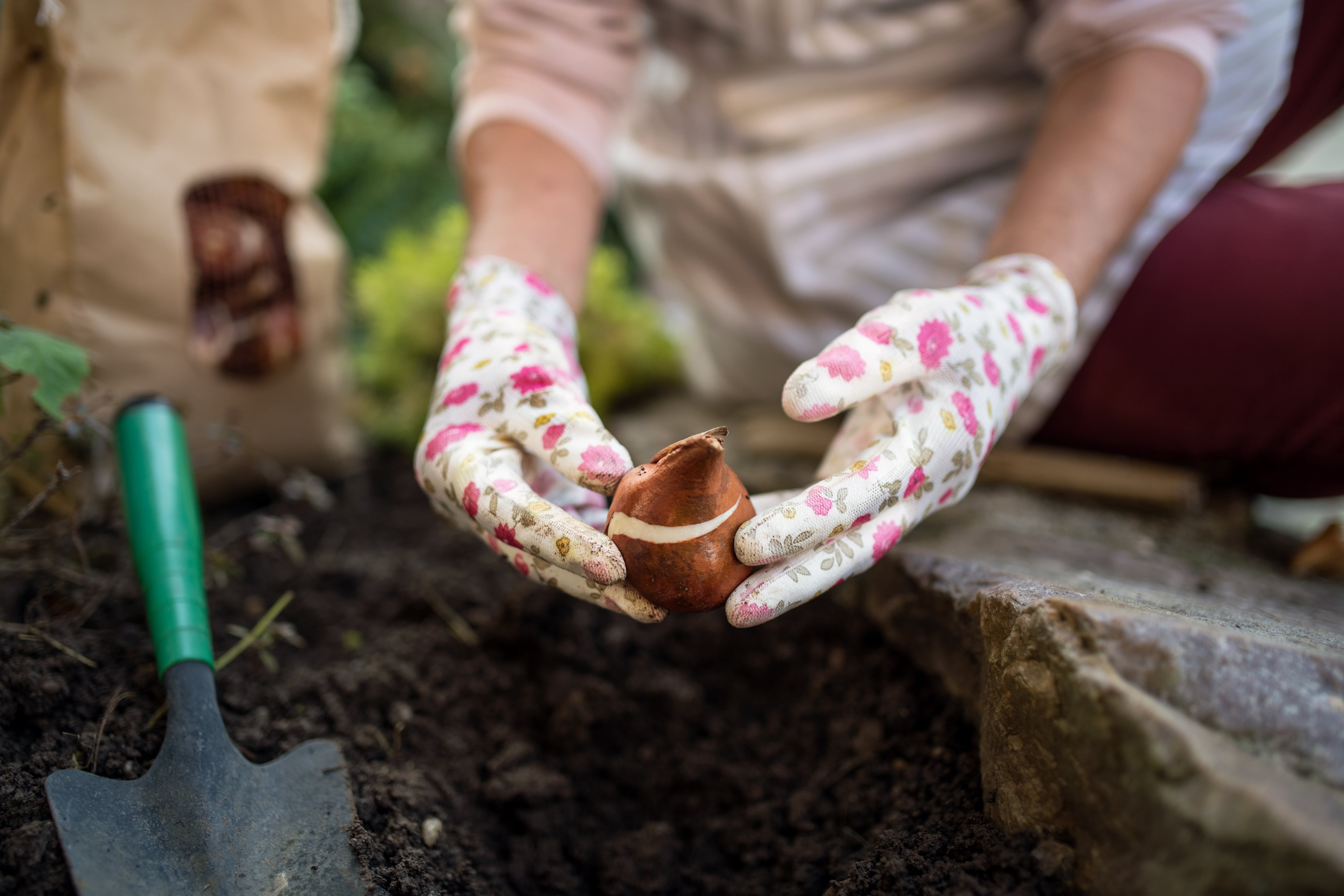We need to talk about variegation. Or at least I need to talk about variegation, a subject that divides gardeners in much the same way that air fryers do chefs, or the reborn popularity of white socks neatly splits the generations (I hear you).
Despite coming of age in an era when variegated aucuba (Aucuba japonica ‘Variegata’) was considered the height of elegance, Euonymus fortunei ‘Emerald and Gold’ was a must-have, and variegated poplar trees (Populus candicans ‘Aurora’) were a ubiquitous sight along sleepy farm avenues, I’ve always struggled to like the former.
I know the great majority of gardeners see much beauty in their variously splodged, spotted, striped and mottled foliage (hello Leucothoe fontanesiana ‘Rainbow’; Philadelphus coronarius ‘Variegatus’; Eleagnus ‘Limelight’; Hypericum ‘Tricolor’ and Silybum marianum). But to paraphrase Gilbert and Sullivan, not me, no, never - or at least rarely ever.
I’ve always been thus. Even my first encounter with the refined charms of the vanilla-scented variegated shrub, Azara microphylla ‘Variegata’, trained smartly against a wall, failed to fully win my stubborn teenage self over. It was a similar story when it came to my first teenage sighting of the elegant wedding tree, Cornus controversa ‘Variegata’, whose sculptural, tiered growth habit and gently drooping green-and-cream leaves make it a firm favourite with most.
READ MORE
As for the dubious charms of variegated spreading perennials such as Houttuynia ‘Chameleon’; Ajuga ‘Burgundy Glow’; and Polemonium ‘Stairway’, you can keep them. Instead, I belong firmly to that judgmental minority for whom variegated plants rarely get through the garden gate.
The few exceptions to this ruthlessly self-imposed purdah include various variegated forms of the woodland’s edge, spring-flowering perennial known as brunnera, a plant whose large, heart-shaped, silvered leaves with their intricate tracery of barely-there green veins are impossible to resist. Likewise, positioned carefully, ideally in an enclosed shady courtyard where it’s grown in thoughtful combination with other handsome foliage shrubs, I can fully appreciate the ghostly charm of Fatsia ‘Spider’s Web’, or the quiet beauty of Pittosporum ‘Silver Queen’. The same goes for some of the more subtly variegated varieties of spurge such as the evergreen Euphorbia characias ‘Silver Swan’, and the lacy, silvered fronds of Athyrium nipponicum var. pictum.
As the years have passed, I’ve also grudgingly come to concede that certain other kinds of variegated plants can light up a shady corner in a special way, or give an additional layer of interest to a planting scheme. But only, I think, when used with a particularly artful combination of flair and restraint. Part of the trick here lies in (a) never mixing silver/cream/white variegated plants with golden-variegated varieties, which almost always results in a queasy combination; and (b) rigorously restricting the use of variegated plants to just a handful of key varieties that are greatly outnumbered by non-variegated varieties. This way, much like wearing a brightly patterned top or tie, their visual busyness is counterbalanced by the restful foil of gentler tones.


Putting aside the thorny subject of personal prejudices (I know when I’m on a losing wicket), the science of variegation is fascinating. In some cases, for example, it’s the result of a virus, typically passed on to the plant by vectors such as aphids or other sap-sucking insects, as well as via soil-dwelling nematodes, fungal pathogens, mechanically (via infected tools) or even by infected seed, the usual consequences of which are less vigorous growth. Part of the reason for this is that variegated plants typically produce less chlorophyll (the green pigment in leaves) resulting in less photosynthesis, the process core to plant health.
That reduced vigour also explains why most of the most famously beautiful “streaked” varieties of tulips – for example, Tulip ‘Semper Augustus’, whose virused bulbs were exchanged for huge sums of money in Holland during the “tulipomania” of the 17th century – almost inevitably became extinct.
It’s also not unusual to see some kinds of variegated plants revert to being non-variegated over time. In this case, naturally more vigorous, non-variegated growth initially appears alongside the variegated growth, before gradually becoming dominant. This is because some kinds of variegation are unstable plant traits that can be affected by various complex factors including light and temperature levels. Genetics also plays an important role, for which reason these kinds of variegated varieties can only be propagated vegetatively by cuttings or tissue culture, rather than from seed. The only way to help preserve variegation in a plant when the process of reversion begins is by ruthlessly cutting out any non-variegated growth whenever it appears.


Other kinds of variegation, such as that seen in the much-coveted variety of variegated house plant known as Monstera ‘Thai Constellation’, are naturally occurring mutations first discovered growing in the wild and then introduced into cultivation via tissue culture. In this case, the variegation is a stable plant trait that can be relied on to persist.
Variegated house plants like these are much in demand throughout the world, from different forms of alocasia and philodendron to peperomia and calathea. Such is their rarity that a chosen few (for example Philodendron llsemanii) have become collector’s items that are traded online for large sums of money, just like the beautifully virused tulips of the 17th century once were. Ironically – and again, much like those once much coveted varieties of tulips – their rarity is amplified by the very fact that their variegation often makes them very tricky to grow as well as to propagate.
But that’s not always the case. Just consider the humble spider plant, a popular, ultra vigorous, variegated houseplant that I do admire. The most commonly grown cultivar, Chlorophytum commutatum ‘Variegatum’, has green leaves smartly edged with white. But in the less common variety known as Chlorophytum comosum ‘Vittatum’, that variegation is reversed, with a central band of creamy-white edged on both sides by green.
Almost unkillable, the spider plant forms a smart plume of neatly striped, grasslike foliage, from which baby plantlets regularly emerge on curving stems as if by magic. Much like strawberry runners, these can be easily encouraged to root by gently pegging them on to the surface of a small pot of damp compost and keeping them well watered. Alternatively, they can be left to dangle in pretty clouds beneath the parent plant, so long as the latter is displayed in a hanging plant pot suspended from a height. Grown this way, even the sternest of variegation-phobes, myself included, can’t help but admire their curious, otherworldly beauty.
This week in the garden
Wisteria needs its second pruning of the year (the first is traditionally done in January) to encourage a well-proportioned, tidy growth habit and the plentiful development of flowers for next year’s display. To do this, tie in any growth needed to extend its coverage, then use a sharp, clean secateurs to nip unwanted growth back to about 30cm. See rhs.org.uk for more detailed instructions.
Keep a careful eye on climbing varieties of beans and peas, making sure that they’re given sturdy, wind-resistant supports capable of bearing their weight, and regularly tying in any new growth as it develops to allow for easy harvesting.
Dates for your diary
Carlow Garden Festival 2025 From Saturday, July 26th to Sunday, August 3rd. Pre-booking essential, see carlowgardentrail.com
A Fiesta of Dahlias at June Blake’s garden Tinode, Blessington, Co Wicklow, this weekend from 2pm on Saturday and Sunday. Free workshops, expert talks, plus tours of the garden, all welcome, see juneblake.ie.
















